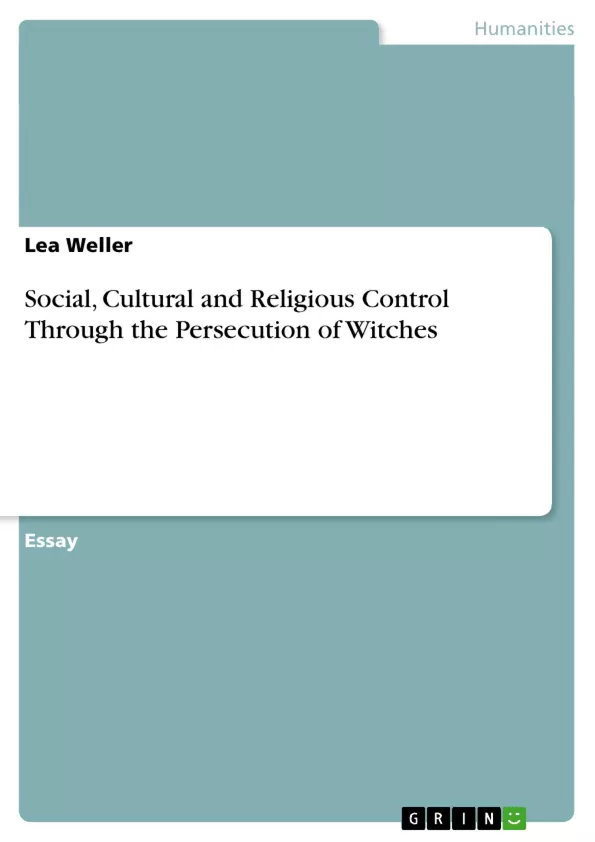This essay will compare the different views, religiously, socially and culturally of witchcraft in different areas of the world, including America, Europe and Africa. It will explore the explanations given by the persecutors and the communities involved.
Inhaltsverzeichnis (Table of Contents)
- Social, Cultural and Religious Control Through the Persecution of Witches
- Witchcraft as a Religious Event
- The History of Modern Witchcraft
- Witchcraft in the Modern World
- The Reclaiming Witchcraft Community
- The Persecution of Witches
- The Role of the Church in the Persecution of Witches
- The Persecution of Witches in Africa
- The Evangelical Churches and the Persecution of Witches in Africa
- The Different Branches of Witchcraft
- The Utopian and Generic Branches of Witchcraft
- The Stereotyping of Witches
- The Role of Women in the Persecution of Witches
- The Role of Traditional Healers in the Persecution of Witches
- The Future of Witchcraft
Zielsetzung und Themenschwerpunkte (Objectives and Key Themes)
This essay explores the historical and contemporary perceptions of witchcraft in different parts of the world, including America, Europe, and Africa. It investigates the reasons behind the persecution of witches and the social, cultural, and religious control exerted through these accusations. The essay also examines the impact of Christianity and its role in shaping beliefs about witchcraft in different contexts.
- Religious and cultural perceptions of witchcraft
- The role of the Church in the persecution of witches
- The impact of modern witchcraft practices on society
- The intersection of traditional beliefs and modern religions
- The enduring power of social control mechanisms through accusations of witchcraft
Zusammenfassung der Kapitel (Chapter Summaries)
The essay begins by examining the origins of modern witchcraft, tracing it back to Gerald Gardner's writings in the 1960s. It then explores the resurgence of witchcraft in the modern world, focusing on the Reclaiming Witchcraft Community in San Francisco. The text delves into the historical persecution of witches, highlighting the influence of the Roman Catholic Church in Europe and the rise of Evangelical churches in Africa. It examines the role of traditional healers in reinforcing beliefs about witchcraft, particularly in Sub-Saharan Africa, and discusses the persistence of accusations of witchcraft despite scientific advancements. The essay concludes by exploring the diverse branches of witchcraft in America, contrasting the "utopian" and "generic" interpretations, and considering the role of women and the persistence of stereotypes surrounding witchcraft.
Schlüsselwörter (Keywords)
The essay revolves around the concepts of witchcraft, religious persecution, social control, cultural beliefs, traditional healers, and the impact of Christianity on societies. It explores themes of power dynamics, gender stereotypes, and the intersection of tradition and modernity in the context of accusations of witchcraft.
- Arbeit zitieren
- Lea Weller (Autor:in), 2009, Social, Cultural and Religious Control Through the Persecution of Witches, München, GRIN Verlag, https://www.grin.com/document/264579



